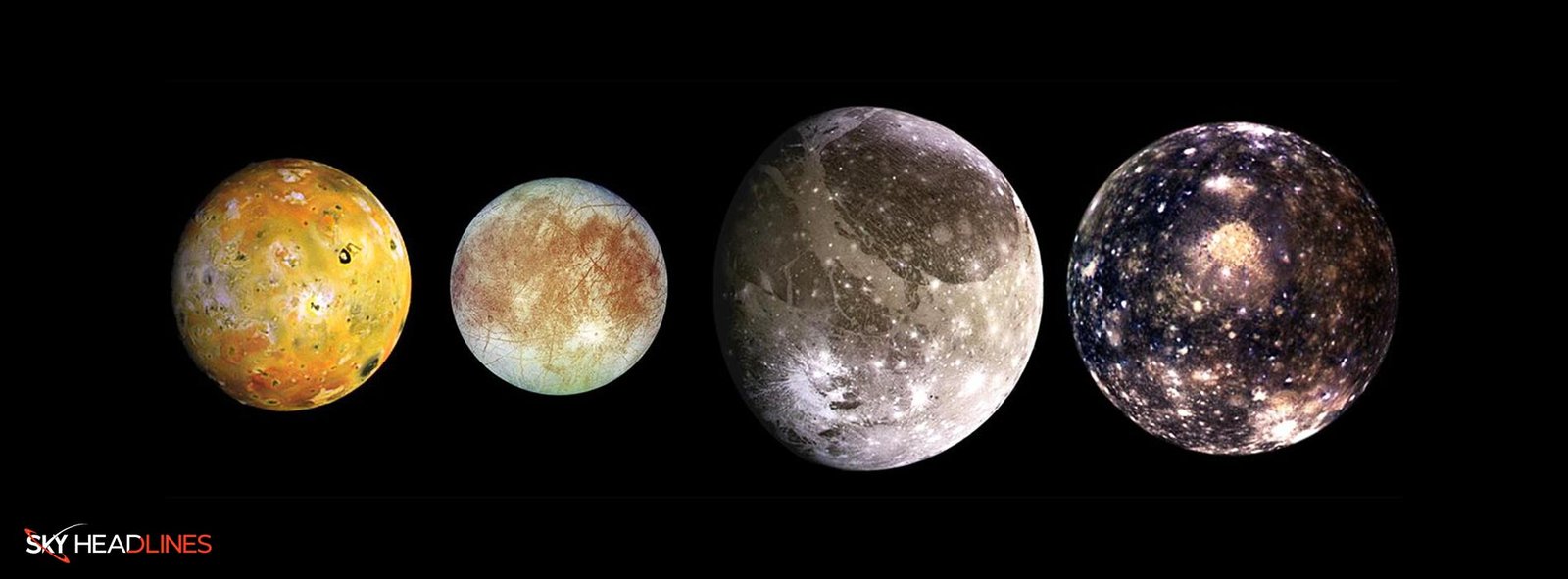Eighty moons of Jupiter are yet to be discovered. Fifty-seven of these moons are named by the International Astronomical Union (IAU). And the remaining Twenty-three will be detailed in the future.
Ganymede (Moon):
Ganymede, the largest of Jupiter moons, was closely observed by the Juno spacecraft during flybys in 2019 and 2021. On June 7, 2021, Juno Cam captured striking images, highlighting smaller craters (25 to 30 miles or 40 to 50 km wide) believed to be formed by Ganymede’s volcanic activity. Jupiter moons continue to be a source of fascination for experts.
Juno, during its 24th orbit around Jupiter on December 25, 2019, executed distant and close flybys of Ganymede, capturing crucial images. The close flyby at 1000 kilometers not only provided high-res surface images but also utilized Ganymede’s gravity to reduce Juno’s orbital period from 53 to 43 days, contributing vital data to Jupiter moons studies.
Europa (Moon):
Jupiter moons Europa, the smallest of the four Galilean moons, is the sixth closest to the gas giant. It may have a water-ice surface concealing a vast ocean, potentially containing twice as much water as Earth. Astrobiologists suggest Europa could be habitable. In 2022, the Juno orbiter passed by Europa at a close distance of 352 km (219 mi).
Io (Moon):
Io (moon) is the innermost and the most geologically active object in the Solar system because of its 400 active volcanos. Due to volcanic eruption this moon’s surface contains sulfur. This sulfur paints the surface in various quiet shades of yellow, red, white, black, and green.
During Perijove 25 on February 17, 2020, Juno closely approached Io. Juno spacecraft is to fly by Io with altitudes of 1,500 kilometers on December 30, 2023, and February 3, 2024. Io’s volcanoes are caused by hot silicate magma.
Callisto (Moon):
Italian astronomer Galileo Galilei discovered Callisto, Jupiter’s second-largest moon, in 1610. With its heavily cratered surface, Callisto is the Solar System’s oldest moon. Juno’s 38th Jovian flyby captured stunning images of Callisto, enhancing our understanding of Jupiter moons
When did the Juno mission end?
The Juno mission was planned to end after completing 37 orbits in February 2018. The spacecraft orbited Jupiter 12 times before the end of July 2018. NASA’s Juno mission was set back to July 2021.
Juno will continue its investigation of Jupiter and its moons until September 2025. To ensure a safe conclusion without impacting Jupiter’s moons, the spacecraft will perform a controlled deorbit into the giant planet’s atmosphere. NASA has stated that Juno will not return to Earth, marking the end of its mission in Jupiter’s orbit and providing valuable insights into the mysteries of Jupiter moons





